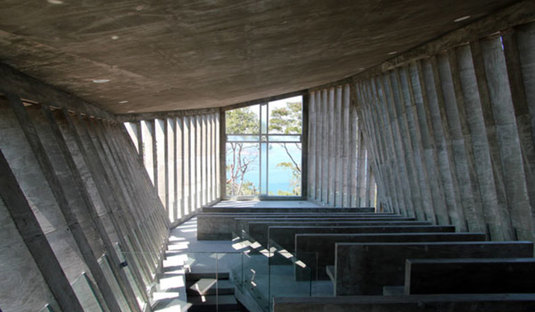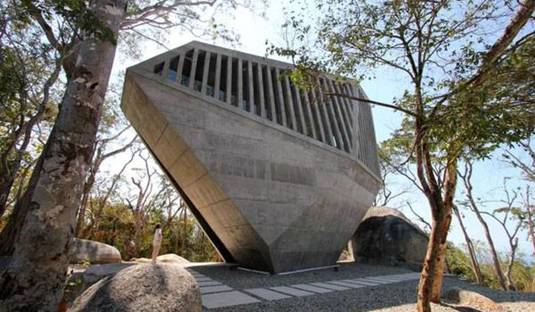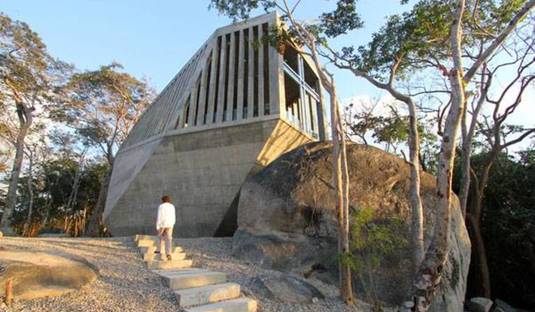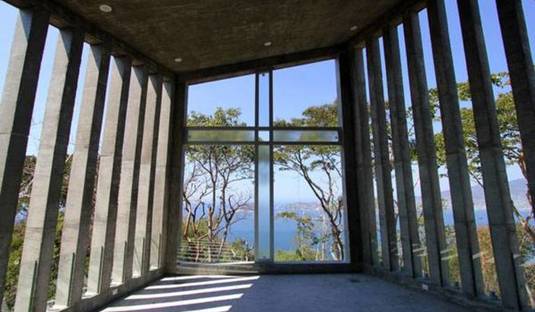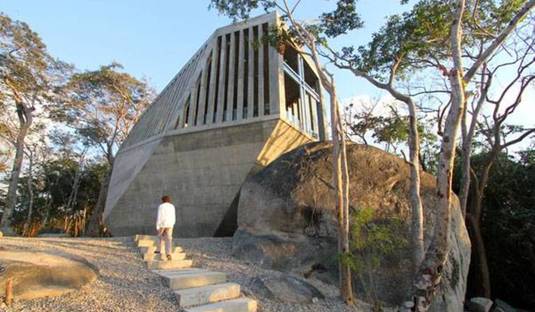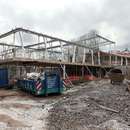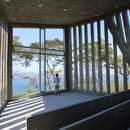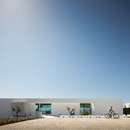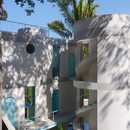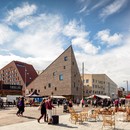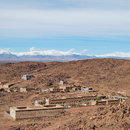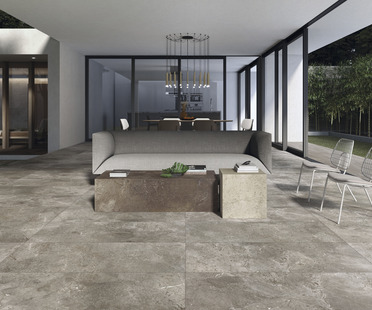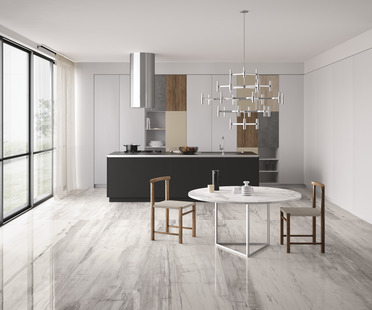12-06-2013
Interview with Esteban Suárez from BNKR Arquitectura
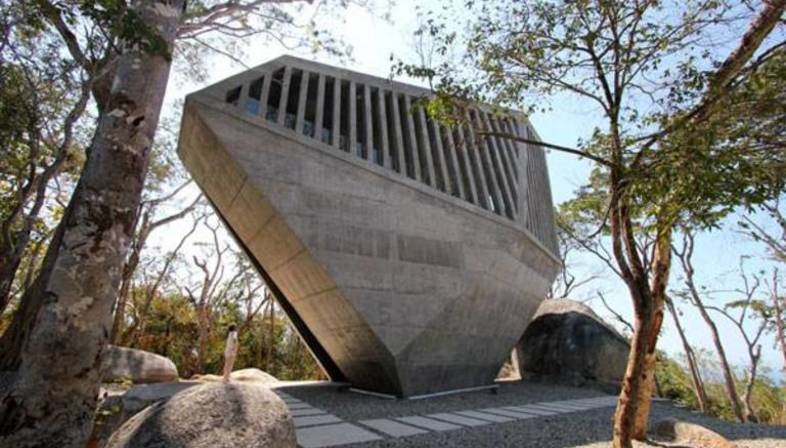 1
1What does the slogan “Stop: Keep Moving” mean? What lies behind this contradiction in terms and why are you attracted by anomalies, divergences, incompatibilities?
“Stop: Keep Moving” is the name of our first book and of our first exhibition. It is the work of our firm’s first 5 years, presented under the theme of an oxymoronic approach to architecture. “Stop: Keep Moving” is an oxymoron, it is the combination of two diametrically opposite terms. It is physically impossible to be still and move at the same time, but conceptually we realised that not only is it possible, it is absolutely true.
Oxymorons are at the centre of everything we know as paradoxical thought: ideas and phrases that appear to be illogical or conflicting but that at a deeper level show us truths about the human condition. Carl Jung wrote “The sad truth is that man’s real life consists of a complex of inexorable opposites… day and night…birth and death…happiness and misery…good and evil. … If it were not so, existence would come to an end”. Oxymorons are a recurring theme in architecture. Clients' demands, programmes, laws, regulations, socioeconomic and political factors, the themes of sustainability are very often contradictory. But we discovered the hidden potential in these exact contradictions and this means we can reinvent our creative process each and every time.
2
How important is camouflage with nature in your architecture?
In Sunset Chapel, Acapulco, every element is designed to allude to, to encompass and to make the most of the landscape. Why do you pick the path of amalgamating what is constructed and what is natural instead of building self-referencing architecture?
The importance of fitting into the surroundings and of the fusion with the environment depends on each project. Sunset Chapel is located in “Brisas Marques”. Luckily, this estate is not fully developed yet and not all the land around has been covered in buildings, so our work is still almost a virgin oasis. We wanted to keep our impact on the environment as low as possible, so to avoid chopping down trees, we positioned the chapel in the middle of them. We reduced the footprint to one third the floor area of the upper level, excavating the land as little as possible so we could keep the surrounding nature intact. We left the concrete in its natural state because it is the same colour as the blocks of granite around it, creating a kind of natural camouflage.
The client brief involved making sure the sun set directly behind the chapel’s altar and taking full advantage of the spectacular views over Acapulco bay. But when we arrived at the site, we were faced with a huge problem: a gigantic, 5-metre high boulder blocking the main view. Blowing up that boulder was out of the question, so we decided to exploit it and turn it into an integral part of the project. We raised the level of the chapel enough to leave the boulder and even the lean of the actual boulder was decisive in the chapel design, so they interact with each other. The camouflage effect obtained makes the chapel look like just one more boulder on the stony Acapulco hills.
3
Your third religious commission, Ecumenical Chapel, is underway. The religious theme does not reappear much in modern architectural practice: very few architects have dealt with it. What did dealing with the religious theme mean to you and how important is spirituality in Mexico at the moment?
The evolution of faith and religion through the history of humankind has always been closely tied to architecture. The most important works in the evolution of spaces, typologies, shapes and construction techniques were commissioned by the various world religions. From the pyramids in Egypt to the Gothic cathedrals, nothing would have been possible without the institutional drive of faith.
This situation has now been completely inverted. The architectural typology of holy places has turned into a kind of “endangered species”. It is very rare to find architects who have been commissioned to complete a religious project nowadays. And this is why we need to take the rare opportunity that is presented to us, to get back this lost relationship. We have attempted to do exactly this in the three chapels we have designed: forget the traditional significance of the chapel in order to reinvent it.
4
The project of the fountain plaza in Ciudad Guzmán seeks to give further meaning to the cathedral’s forecourt and plaza. The plaza has become a place for social interaction in addition to a religious meeting point. What is the social role of architects, in your opinion and how important is contemporary architecture in Mexico?
Mexico is one of the countries with the richest cultural heritage. Despite that, it hides behind the alibi of Spanish oppression and behind the heavy violation of its native past and these still influence this pained, victimised society.
Indeed, Mexican society has become extremely insecure and this is evident in our architecture: many efforts have been made to try and understand what the real Mexican contemporary style is. This incestuous path, where every newborn creation is a diluted version of its precedent, has only led us to creative sterility. Instead of seeking to express our cultural heritage, we prefer the arduous task of constantly reinventing our methods to come up with architecture that is Mexican simply because it was made by Mexicans.
An architect plays a social role because architecture is something that is “used”. Sometimes it is more social than others, depending on the project. This is why, and more to the point, this is when we must design urban spaces: architects must steep themselves in the project’s local culture to gain a deep understanding of what problems need to be solved and see the project through the eyes of the user. If you don’t do this, you risk designing public spaces that cannot be used and are a complete waste of time and money. Architects take on a great responsibility when they are involved in the project of a public space.
5
What kind of architecture does Mexico need right now? What advice would you give young people who want to take up this profession with awareness and attention to the here and now?
The new generation of Mexican architects must shake off those cultural insecurities that make them design works aiming to show the world that they are Mexican. They are already Mexican. The less you try to show that, the more interesting the proposal will be. Architecture must be a specific solution to a unique, particular problem. It must result from the combination of the actual conditions of the location (economical, social, political, cultural and environmental) and the experiences and ideas of the architect.
I advise young people to teach themselves and to make sure they never stop researching, that they keep up with the history of architecture and its present-day production. If we expand our cultural baggage each approach will become more authentic. Not original, because that doesn’t exist, the only truly original thing was the creation of the universe. And they should never forget the words of Jean-Luc Godard “It’s not where you take things from – it’s where you take them to”.










